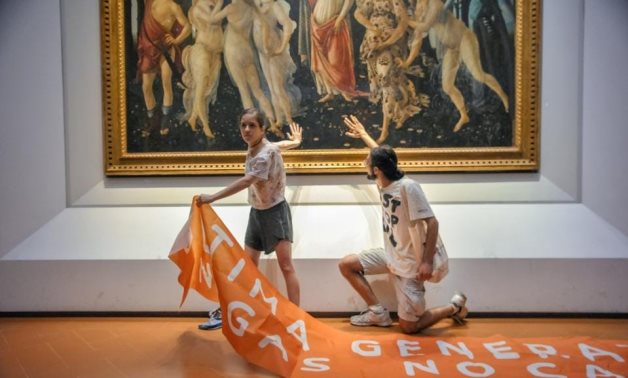
Activists of environmental conservation associations have been spreading this method in European museums - social media
CAIRO – 1 September 2022: Conservationists in Europe have devised a new way to get attention by spreading superglue on their hands and then sticking it to artwork in the hope that neither security nor the police arrive before the glue dries.
Activists of environmental conservation associations have been spreading this method in European museums.
Their goals and presence in some of the world's most famous museums were - according to the protesters - meaningful to their cause of drawing attention to the climate crisis. Their message is direct: Their countries should not agree to any new gas and oil leases, according to the American magazine Forbes.
A series of stunts targeting famous paintings in Great Britain began as members of the Just Stop Oil coalition glued themselves to Horatio McCulloch's My Heart's in the Highlands at the Kelvingrove Art Gallery and Museum in Glasgow, Scotland, in late June.
Last July, two activists covered John Constable's Hay Wain, an 1821 romantic landscape considered a National Treasure, at the National Gallery in London with their own copy and then attached themselves to the frame.
Also in July, activists made similar moves to a Van Gogh painting at the Courtauld Institute in London. The gallery was cleared by security and police arrived. They targeted the Peach Trees Blossom landscape, which depicts Provence in southern France, which is currently experiencing unprecedented droughts.
In Italy, protesters from the same group tried to stick themselves on the Primavera by Sandro Botticelli (circa 1480) at the Gallerie degli Uffizi in Florence, Italy, but security intervened before the glue on the glass protecting the painting dried and the young protesters were forcibly pulled out while denouncing the damage to the planet.
There were other incidents. At a Naval Museum in Genoa, activists wrote slogans on dolphin ponds including "No gas, no coal" and stuck their hands to the glass of tanks.
The Uffizi Gallery's website describes Botticelli's 540-year-old Primavera (Spring) and one of the world's most famous paintings as "a celebration of love, peace and prosperity".
Comments
Leave a Comment